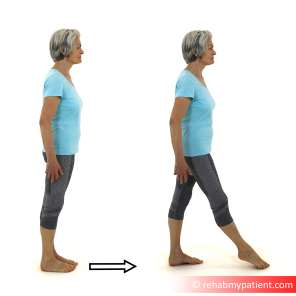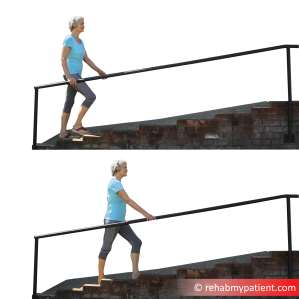Gait Re-Education
Posted on 21st Mar 2018 / Published in: General

While it is hard for anyone to imagine the thought of having to learn how to walk again, this is a terrifying reality for many people who have to rehabilitate from injuries, illness, or disease.
What is Gait Re-Education
In situations where someone has to re-learn how to walk, gait re-education plays a significant role in patients getting 'back up on their feet'. Gait training and rehabilitation is a specialised type of physical therapy geared towards helping patients improve their balance, as well as their ability to stand and walk.
People Who May Require or Benefit from Gait Training:
- People who have sustained a spinal cord injury.
- Individuals diagnosed with degenerative diseases including Parkinson's Disease, Multiple Sclerosis, or arthritis.
- Stroke victims.
- Joint injury or joint replacements.
- People with amputated lower limbs.
- Individuals who are suffering from musculoskeletal disorders such as Muscular Dystrophy.
- People who are suffering from neurological damage or disorders.
The Gait Re-Education Process
The exact process of gait re-education varies on a case-by-case basis. The chances are good that your physician or care team will advise you to begin gait training as soon as possible following an illness or injury that impedes your ability to walk. Additionally, your health care team or physician may advocate using other types of physical therapy and treatments to get you on your feet once again.
One thing to keep in mind is that you must have enough endurance, strength, and good health to start engaging in physical therapy for gait training. Further, your joints must be strong enough to support your weight and undergo the rigors of gait re-education.
If your healthcare team has determined that you are healthy enough to begin gait training, the rehabilitation process gets customized to meet the patient's physical and mental needs during the workout. The use of specialized equipment and machines is frequent in the beginning stages of gait training to help patients maintain their balance, build their strength, as well as offer support and stability while exercising.
Gait training regularly involves using a treadmill and doing other exercises and activities to strengthen muscles. People who are early in the rehab process can wear a protective harness while using the treadmill to protect against slips or missteps. Other activities you may be required to participate in include standing up, sitting down, stepping over objects, lifting your legs, and bending at the joints.
Gait Re-Training Results
When undergoing gait retraining, the immediate goal is to build up lower body strength and stability. Strong legs help people stabilize their balance and reduce the risk of falling if the patient loses balance. The long-term goal is to get patients back on their feet so they can walk with confidence and ideally, with limited or no assistance necessary.
When taking strides to retrain your gait, a diverse support network of family, friends, healthcare professionals, and physical therapists is critical for motivation and encouragement. All you have to do is take one step at a time. Your support system is there to champion for you every stride of the way.


Sign UP
Sign up for your free trial now!
Get started with Rehab My Patient today and revolutionize your exercise prescription process for effective rehabilitation.
Start Your 14-Day Free Trial